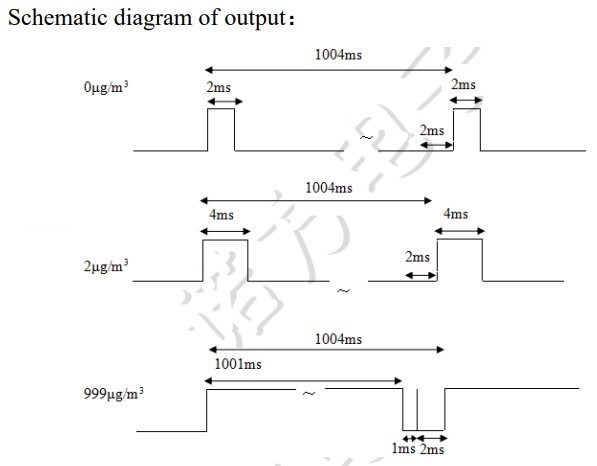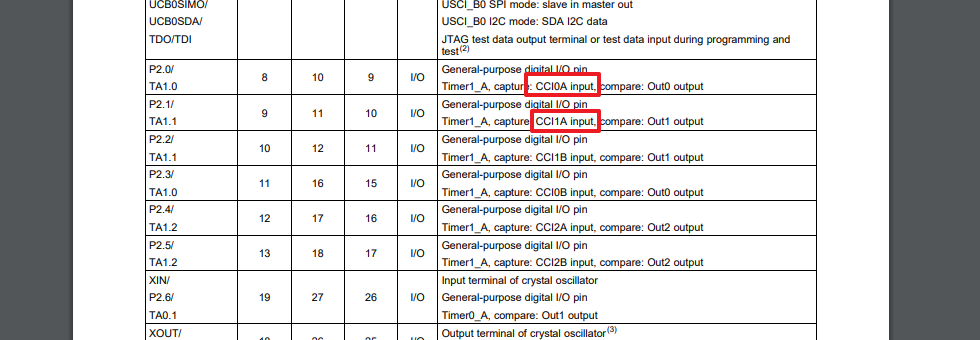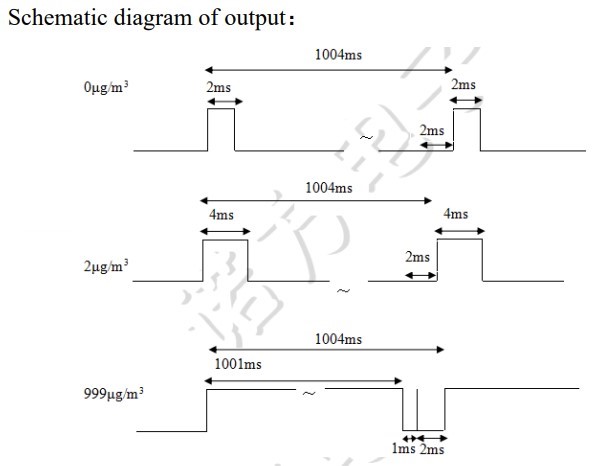I am trying to capture PWM output from the sensor board on P2.0 and P2.1 of the MSP430 board. I am able to capture for P2.1 but I am not getting the interrupt for P2.0
I need to capture both rising edge and falling edge. There are two inputs. Below is the code.
#include <msp430.h>
void UART_SendArray(char *TxArray);
int main(void)
{
WDTCTL = WDTPW + WDTHOLD; // Stop WDT
if (CALBC1_8MHZ==0xFF) // If calibration constant erased
{
while(1); // do not load, trap CPU!!
}
DCOCTL = 0; // Select lowest DCOx and MODx settings
BCSCTL1 = CALBC1_8MHZ; // Set DCO to 8MHz
DCOCTL = CALDCO_8MHZ;
P1SEL = BIT1 | BIT2 ; // P1.1 = RXD, P1.2=TXD
P1SEL2 = BIT1 | BIT2 ; // P1.1 = RXD, P1.2=TXD
P2DIR &= ~(BIT0 | BIT1); // P2.0 & P2.1 to Input Capture
P2SEL |= BIT0 | BIT1;
UCA0CTL1 |= UCSSEL_2; // SMCLK
UCA0BR0 = 52; // 1MHz 9600
UCA0BR1 = 0; // 1MHz 9600
UCA0MCTL = UCBRS_0 + UCBRF_1 + UCOS16; // Modulation UCBRSx = 1
UCA0CTL1 &= ~UCSWRST; // **Initialize USCI state machine**
IE2 |= UCA0RXIE; // Enable USCI_A0 RX interrupt
// Configure the TA0CCR1 to do input capture
TA1CCTL1 = CAP + CM_3 + CCIE + SCS + CCIS_0;
// TA0CCR1 Capture mode; CCI1A; Both
// Rising and Falling Edge; interrupt enable
TA1CTL |= ID_3 + TASSEL_2 + MC_2 + TAIE; // SMCLK, Cont Mode; start timer
UART_SendArray("Uart Initialised!\r\n");
while(1)
{
__bis_SR_register(LPM0_bits + GIE);
__no_operation();
}
}
// TA0_A1 Interrupt vector
#pragma vector = TIMER1_A1_VECTOR
__interrupt void TIMER1_A1_ISR (void)
{
switch(__even_in_range(TA1IV, TA1IV_TAIFG))
{
case TA1IV_NONE: break; // Vector 0: No interrupt
case TA1IV_TACCR1:
UART_SendArray("Got A1_CCR1\r\n");
__bis_SR_register_on_exit(LPM0_bits + GIE);
break; // Vector 2: TACCR1 CCIFG
case TA1IV_TACCR2: // Vector 2: TACCR1 CCIFG
UART_SendArray("Got A1_CCR2\r\n");
__bis_SR_register_on_exit(LPM0_bits + GIE);
break;
case TA1IV_6: break; // Vector 6: Reserved CCIFG
case TA1IV_8: break; // Vector 8: Reserved CCIFG
case TA1IV_TAIFG: break; // Vector 10: TAIFG
default: break;
}
}
void UART_SendArray(char *TxArray)
{
while(*TxArray)
{
while (!(IFG2 & UCA0TXIFG));
UCA0TXBUF = *TxArray++;
}
}
If I try "case TA1IV_TACCR0" it gives a compile error. Is it because CCR1 has the highest priority so I cannot get the CCR2? Please help. I am using Timer0 for other purpose so I need to use Timer1. I am testing this of the G2553 but I want to implement it on FR6989 finally.
Regards
Vijay






